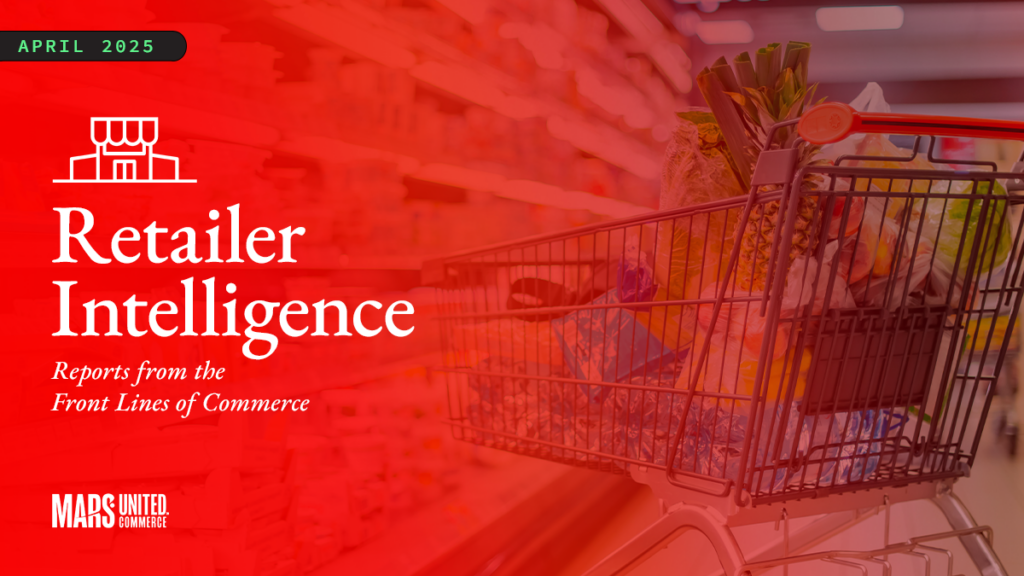A special report from:

Retail is evolving faster than ever before. There are new places to shop, new methods of buying, new avenues for discovery. In short, retail has moved beyond the confines of a store or commerce website to become something that can — and should — happen anywhere and everywhere, seamlessly.
Shoppers are at the heart of this evolution. They’re now buying groceries at six retailers, on average, to take advantage of sales and/or to find the exact products they want. Brands have lost the control they once had over the path to purchase, as technology has literally placed that power in the hands of shoppers. The advertising media used to reach shoppers has become highly fragmented, and retailers themselves have become media.
Brands and retailers that want to continue winning with shoppers must evolve to address their rising environmental concerns, growing focus on personal health and safety, intensifying time constraints, and access to evermore enabling technology. They need to deliver a different shopping experience that will satisfy these evolving need states.
But shoppers will reward the brands and retailers that do so: 81% of consumers are willing to pay more for a superior customer experience — and 44% will pay a premium of more than 5%, according to Capgemini.
But while 80% of companies already believe they’re offering a “superior” customer experience, only 8% of shoppers agree with them, according to Bain & Co. So there is plenty of work to be done on the part of retailers and their brand partners.
The first step toward success is understanding the shopper need states that are having the greatest impact on the future of retail. The following article examines the five most critical need states, as determined by The Mars Agency’s internal research and industry expertise. It also presents 15 emerging tools and technologies that retailers and brands can use to keep pace with these evolving needs.

1. MAKE IT SEAMLESS:
What Consumers Say:
- 64% are more likely to recommend a brand because it delivers a simple experience. (Siegel+Gale)
- 64% are willing to pay more for simple experiences. (Siegel+Gale)
- 96% have left a store without making a purchase because they couldn’t find the items they wanted or encountered poor customer service. (iVendRetail)
Here-Now Solutions:
A. Smart Speaker Shopping

What it is: By now, most consumers are familiar with voice-activated devices like Amazon Alexa or Google Home. Earlier this year, Amazon revealed that hundreds of millions of Alexa-enabled opportunities are available throughout the world — thanks to the technology’s ability to integrate with other devices from thousands of other brands.
Why it matters: Once connected to a consumer’s payment information, these devices enable seamless shopping at any time, from anywhere. That kind of experience will be appreciated by shoppers across all generations.
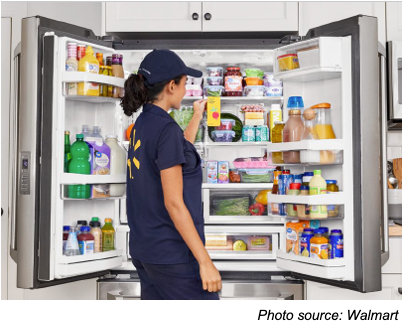
B. Store-to-Fridge Shopping
What it is: Retailers and appliance manufacturers are aligning to invest in frictionless experiences that can capture shopper loyalty. Smart fridges have been on the market for several years, and new mobile apps can deliver recipes based on what’s in the user’s fridge — and then do any necessary shopping for them. While the Walmart InHome delivery service currently has associates fulfilling orders placed by shoppers themselves, industry insiders think future modifications could have them checking grocery inventory and actually placing orders while on location.
Why it matters: It will be much harder to influence the browsing, impulse, and trial behaviors of at-home shoppers. Brands and retailers will need to find new, innovative ways like these to capture their attention.

C. In-Car Shopping
What it is: Technology like MAVI OnMyWay brings safe, easy, curated shopping to the dashboards of connected automobiles. Drivers can ask their cars to recommend, order, pay for, and coordinate pickup of coffee, meals, groceries, and even need-it-now items like phone chargers, flowers, and personal care products.
Why it matters: Cars have long been a central hub for our personal lives, but new technologies will help them play an even bigger role. Brands should find ways to be first to market to help retailer partners test this emerging capability to reach on-the-go consumers.
2. MAKE IT PERSONAL
What Consumers Say:
- 91% are more likely to shop with brands that present personally relevant offers and recommendations. (Accenture)
- 80% are more likely to buy brands that provide personalized experiences. (Epsilon)
- 83% will share data if it will help deliver a more a personalized experience. (Accenture)
Media source: Forbes
Here-Now (or Soon-to-Be) Solutions:

A. Brand VIPs
What it is: Moët Hennessy created NFC-enabled cards that activate a digital experience giving users exclusive access to personalized event opportunities and product recommendations. The content within the experience changes dynamically depending on event availability and the user’s previous engagement history.
Why it matters: Traditionally, Moët Hennessy has had few ways to connect with shoppers because their products are sold at third-party retail. With the personal data provided by consumers through the experience, the company can now establish direct relationships that last far beyond the purchase. What’s more, community experiences encourage consumers to become buyers/repeat buyers and incentivize direct purchase from the brand, which can bolster e-commerce goals.

B. Data Discovery
What it is: Personalization is critical to success for music streaming platforms. Spotify uses first-party data to help drive personalized recommendations (like the Discover Weekly playlist) on a regular basis, but their end-of-year Wrapped Report leverages the data to send users summaries of their listening habits via templated graphics to encourage social sharing.
Why it matters: Consumers are far more interested in providing data if it helps them discover things about themselves rather than just informing brands.
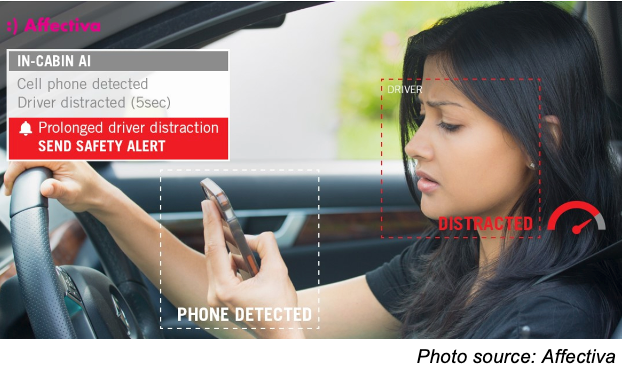
C. Emotion-Based Experiences
What it is: L’Oréal partnered with Emotiv to create an EEG-based (electroencephalography) headset that uses neuroscience to provide precise, customized fragrance advice. The headsets detect emotions to determine the best scent for each shopper.
Another company, Affectiva (see image, above right), has technology that can monitor the interior of an automobile, observing all the inhabitants to detect driver distraction or fatigue, for example, and ensure that no child or pet is ever left alone in the car. Users also can employ next-level mobility experiences delivering personalized wellness, comfort, and entertainment features on the go.
Why it matters: Potential ethics and privacy issues aside, emotion recognition is likely to emerge in the coming years as a prominent marketing capability and lever for brands and retailers — offering a way to understand consumers on levels never before seen.
3. MAKE IT MEMORABLE
What Consumers Say:
- 74% are at least somewhat likely to buy based on experiences alone. (PwC)
- 65% are influenced more by a positive experience than great advertising. (PwC)
- 49% have made impulse purchases after a positive customer experience. (Dot Digital)
Here-Now Solutions:
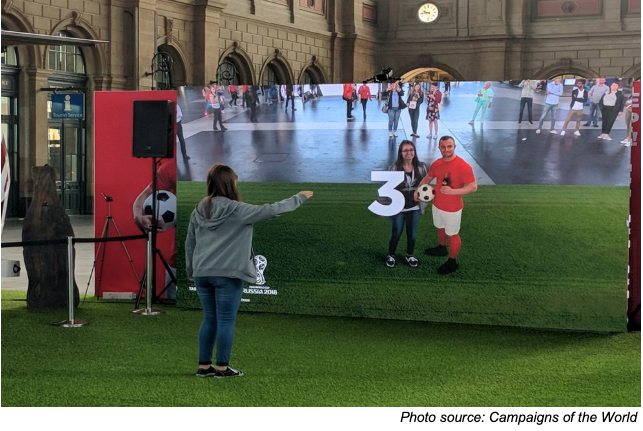
A. Reimagined Experiences
What it is: Experiential marketing, also called “engagement marketing,” is a strategy that invites audiences to interact with brands in a real-world situation. Using participatory, hands-on materials, brands can show consumers not just what their products deliver but what the brand itself stands for — a part of the conversation that’s growing in importance. Increasingly, these experiences are becoming “phygital,” a blend of in-person and digital interaction.
Why it matters: Experiential marketing takes commitment and investment, but it can build a lasting connection between brands and consumers. Events also provide the perfect platform to share lifestyle content, facilitating the collection of vital first-party data from attendees.
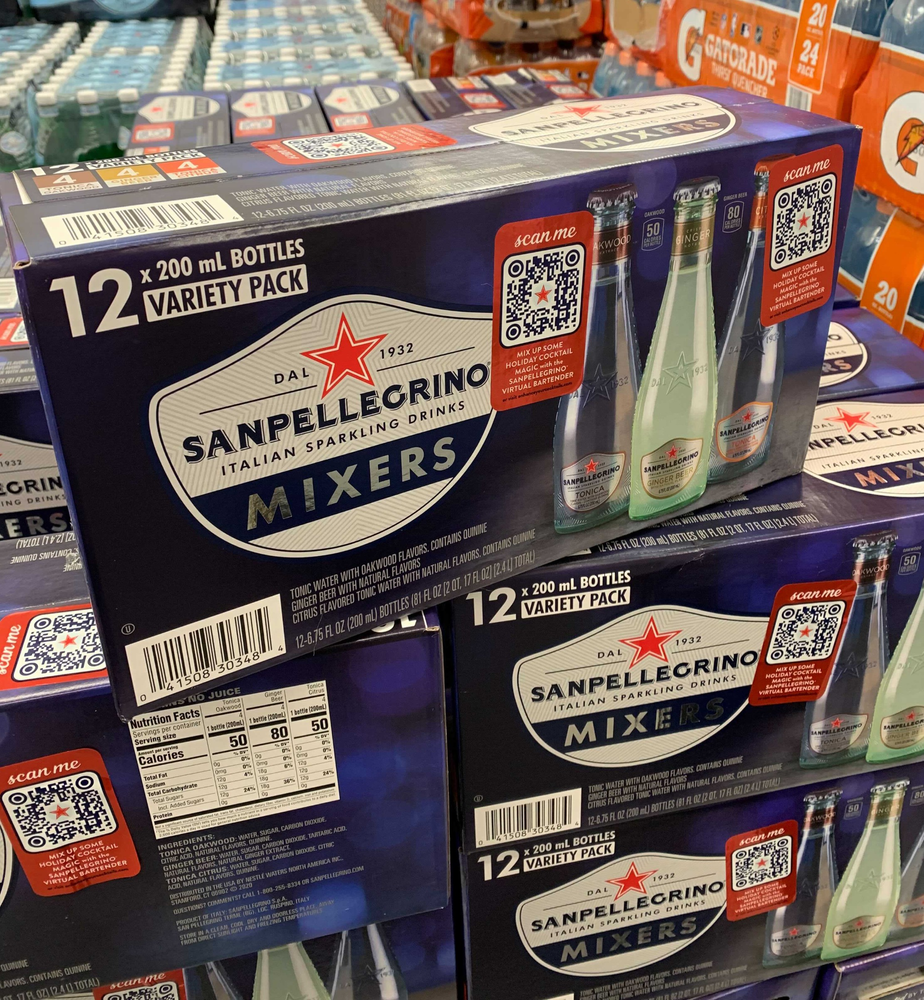
B. Connected Packaging
What it is: Brands are looking beyond product usage to stay engaged with their consumers and be more relevant in their lives. Connected packaging gives brands direct interaction with brand buyers to share updates and educate them in a sustainable manner. It also provides another way to collect data that can inform future decisions about products and marketing.
Why it matters: The ability to communicate with shoppers in real time at the precise moment they’re either buying or consuming products helps brands understand their targets on a more intimate level, thus building loyalty and deepening relationships.

C. Sensory Experiences
What it is: Industry watchers estimate that Meta has sold over 10 million units since launching the Oculus Quest 2 virtual reality headset in October 2020. New capabilities are pushing Oculus experiences even further by adding smells and other tactile sensations. While the execution is still not 100% seamless, the technology will assuredly improve quickly — and user adoption will grow.
Why it matters: When it comes to virtual experiences, the bar is being raised continuously – and quickly. These experiences allow shoppers to interact with your brand on a whole new level.
4. MAKE IT IMMEDIATE
What Consumers Say:
- 62% cite speed of delivery as an influence on their purchase decisions. (Retail Industry Leaders Association)
- 55% will switch retailers to get faster delivery. (Capgemini)
- 85% of Instacart users now prefer order fulfillment in two hours or less. (Instacart)
Here-Now (or Soon-to-Be) Solutions:

A. Quick Commerce
What it is: German on-demand grocery start-up Gorillas fulfills orders for fresh produce, milk, cat litter and other goods in less than 10 minutes from a network of dark warehouses. The company entered the U.S. market in 2021 with a Brooklyn operation that uses bike couriers.
Why it matters: Quick commerce delivery is in greater demand than ever, and it’s just a matter of time before consumers will be able to get nearly anything delivered to their doorstep almost instantly.

B. Mobile Smart Stores
What it is: Tortoise’s Mobile Smart Store offers a frictionless, 15-second checkout experience on wheels. Consumers walk up, tap to pay and unlock the container lid, take an item from inside, and go on their way.
Why it matters: Imagine searching for a bite to eat and getting notified that your favorite brand is available for purchase down the street or on the other side of the shopping center. These technologies let brands drive impulse purchase at the zero moment of truth, without the need for stores or displays.

C. Drone Delivery
What it is: Amazon patents from several years ago illustrate the retailer’s various ideas for expanding autonomous delivery via other-worldly “fulfillment beehives,” blimps, and self-parachuting package labels. The beehives “would be built vertically to blend in with high rises in urban areas,” according to the patent; blimps would circle cities at 45,000 feet to launch drones carrying orders; labels would include self-adhesive backing, parachute cords with shock absorbers, and a breakaway cover.
Why it matters: Autonomous delivery methods have been in the works for some time, and technology advances are bringing some of these innovations closer to market.
5. MAKE IT MATTER
What Consumers Say:
- 61% are willing to pay more for sustainable goods. (Nielsen)
- 87% would buy a product because the manufacturer advocates for an issue they care about. (Cone Communications)
- 64% choose, switch, avoid or boycott brands because of their stance on social issues. (Edelman).
Here-Now Solutions:

A. Inclusive Design
What it is: Whether it’s beer cans with braille, easier-to-open packaging, or voice-enabled ordering, brands are recognizing that inclusivity is not only good for their image, but good for business, too.
Why it matters: There are nearly two billion people with physical challenges worldwide who have a total of $1.9 trillion in disposable income. Making your brand accessible widens exposure, not only to these individuals but also to their friends and families.

B. Reduce, Renew, Reuse
What it is: Adidas recently launched a “Nothing Left Behind” campaign to highlight the brand’s commitment to extending product lifecycles and minimizing waste.
Molson Coors is investing $85 million to eliminate plastic rings from its products by 2025.
Coors Light recently opened a “Plastic-Free Future Mart” pop-up experience in Brooklyn to promote the change.
Method recently partnered with the Fifty-Nine Parks Print Series to help encourage visits to national parks and inspire exploration and protection of these natural wonders.
Tim Hortons and Burger King have both teamed with Loop to let patrons ask for reusable containers and cups when ordering select foods and beverages.
Why it matters: Powerhouse brands are putting their money where their mouths are, taking direct action to support the environment.

C. Social Relevance
What it is: For brands like Patagonia and The Beauty Counter, taking an active voice in social and political issues is built into their brand DNA. But events since 2020 have reinforced the importance of brand purpose across the board and increased expectations among consumers for companies to take a more active role in social conversations.
Why it matters: Today’s consumers, especially younger generations, expect brands to speak out and will make their purchase decisions accordingly.
______________
At The Mars Agency, we are committed to being leaders in innovation. To help our clients stay ahead of the competition in a fast-paced and constantly evolving marketplace, we closely monitor any and all news across the connected commerce ecosystem to keep them well informed and ready to capitalize on emerging trends. For more information, contact Peter Breen at [email protected].

